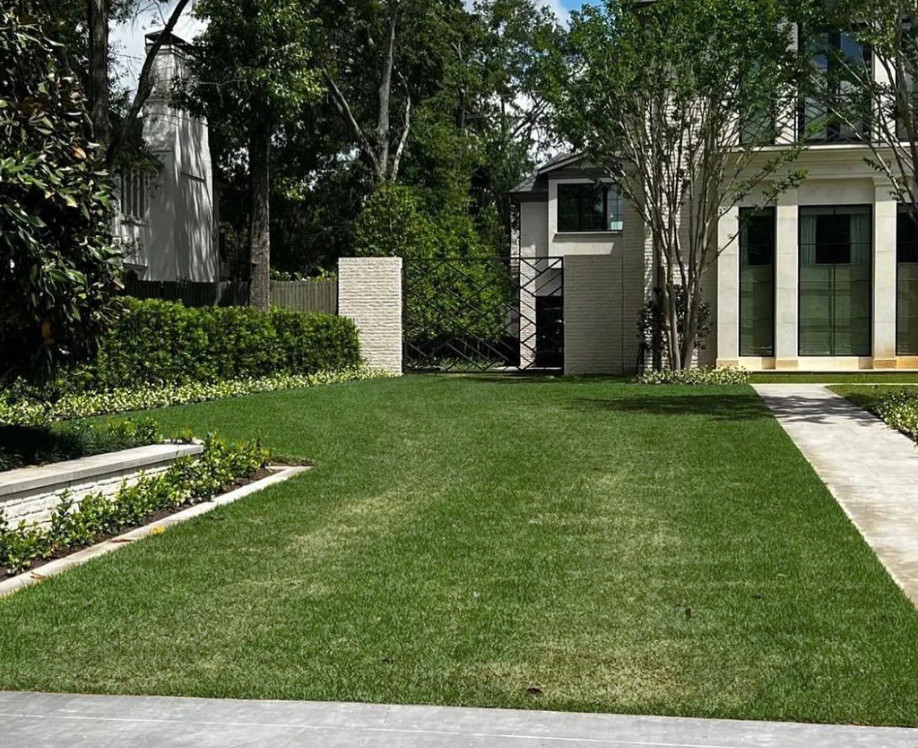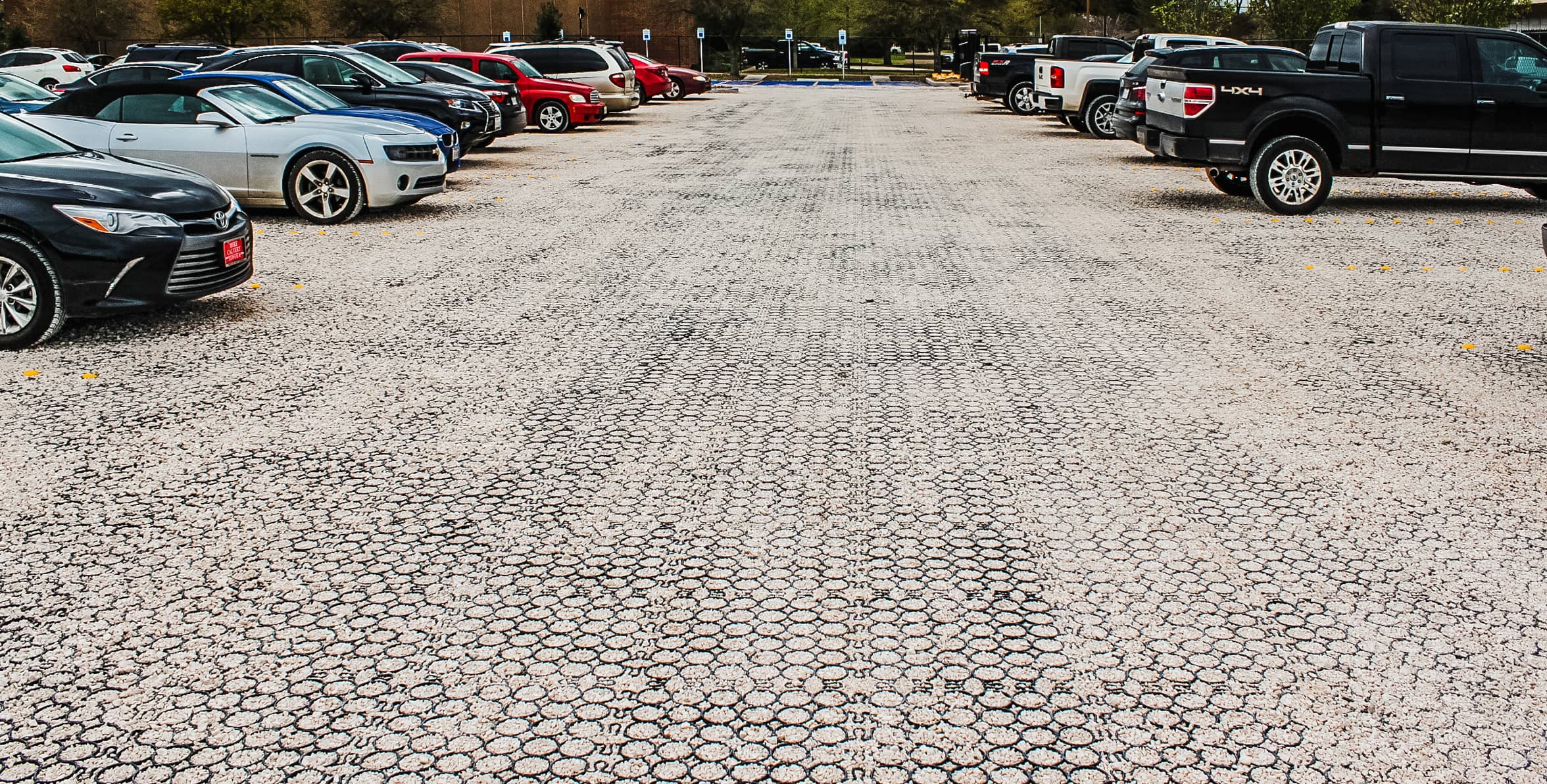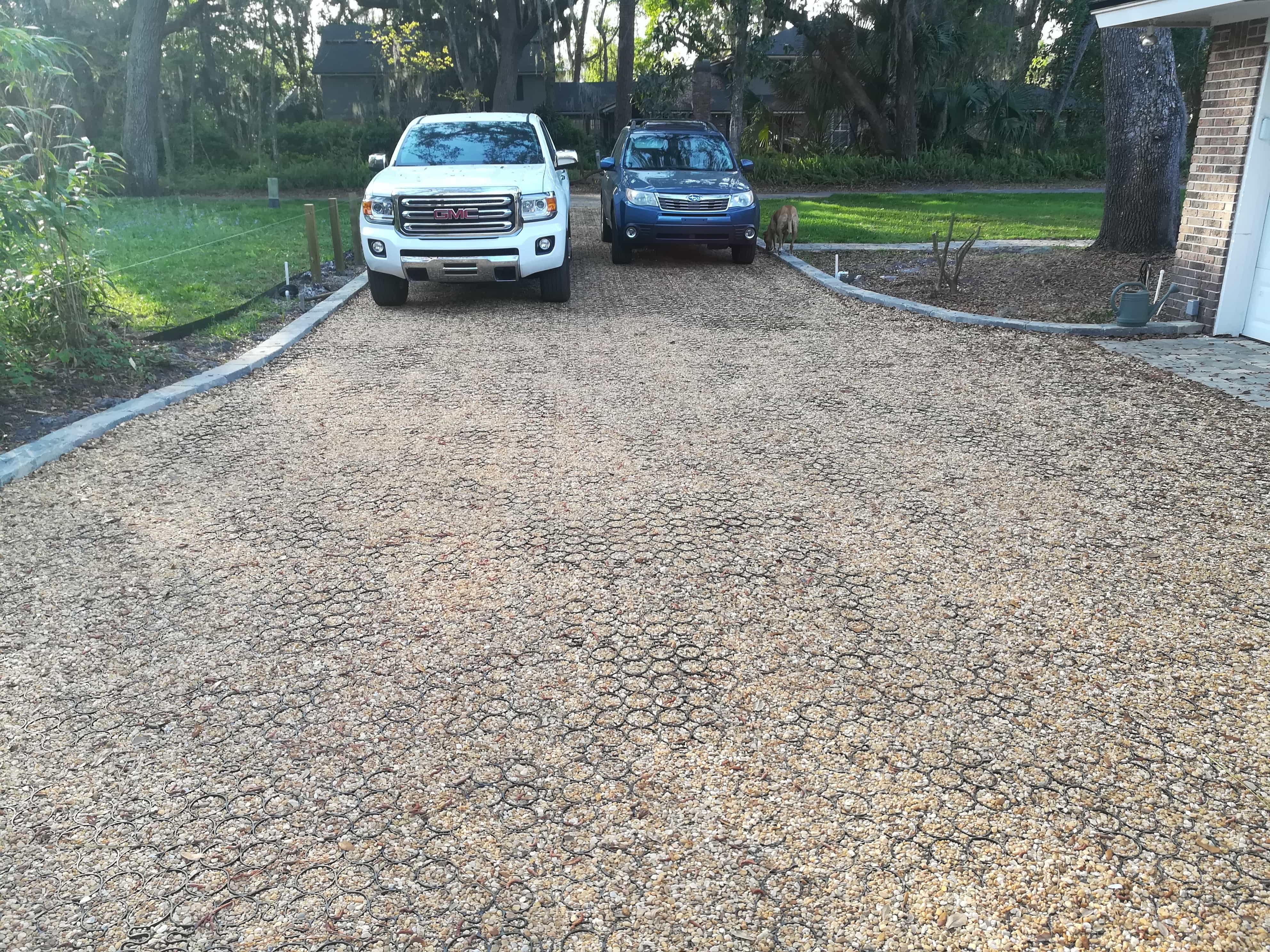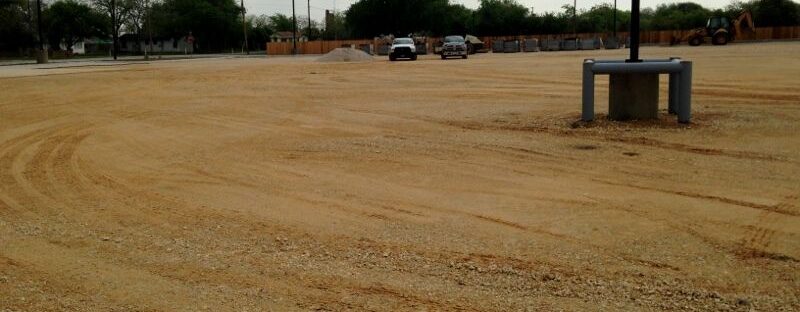
Parking pads are often overlooked in residential and light commercial layouts. A poorly built surface can lead to rutting, drainage problems, or early material failure. The best parking pad ideas take real-world conditions into account—supporting loads, managing runoff, and minimizing upkeep over time.
Why the Right Parking Pad Material Matters
While the term can refer to different setups, a parking pad typically means a standalone or expanded vehicle parking surface—like a side pad, guest stall, or the apron in front of a garage. Parking pads must add usable space, but they also need to hold up under weight and weather. Materials behave differently depending on traffic volume, soil conditions, and regional climate. Choosing the wrong one can lead to recurring problems—especially in areas with freeze-thaw cycles or heavy rain.
Gravel Parking Pads: Quick Install, High Upkeep
Gravel (un-reinforced gravel) drive surfaces remain popular for budget-conscious installs, but they often break down with regular traffic or poor drainage.
Loose Fill Is Easy but Unstable
Among common parking pad ideas, gravel is widely used because it’s simple to install and adapts well to uneven terrain. It also allows water to drain through to the subsoil. But vehicles tend to displace the fill—especially at edges—and that means constant raking or redistribution.
Rutting, Weed Growth, and Fill Loss
Among basic parking pad ideas, gravel is the most common—but without a border or stabilization layer, it shifts under weight. Ruts form quickly, weeds break through, and regular top-offs are needed. It’s cheap up front—but carries hidden long-term maintenance costs. In areas with clay soil or poor grading, gravel often moves with water flow, creating soft spots and edge collapse. Even a well-packed gravel pad may need attention after every storm.
Concrete Pads: Strong but Impermeable
Many parking pad builds rely on concrete, but its lack of permeability can create downstream issues.
Solid Surface, Higher Cost
Concrete offers a durable, clean finish with good load support. It’s ideal for heavy-duty applications, but installation requires excavation, forming, and curing time—adding cost and delay. A two-car concrete pad may exceed $3,500 when including labor and prep.
Runoff and Cracking Issues
Concrete doesn’t absorb water—it redirects it. Without a proper drain system, that runoff can undermine soil. Freeze-thaw cycles and shifting ground also introduce cracks, which are difficult to patch invisibly. In colder zones, sealed concrete may still degrade if subdrainage isn’t addressed during install.
Paver Pads: Flexible Design, Uneven Results
Paver systems allow for design flexibility, but their performance depends heavily on proper installation.
Aesthetic Control, Structural Limits
Interlocking pavers offer texture and curb appeal. They allow some water to pass between joints, but without a reinforced base, they’re vulnerable to shifting under frequent use. A typical install requires several compacted layers of crushed stone—adding material and labor cost.
Shifting and Maintenance Concerns
If not placed correctly or if the base settles unevenly, pavers shift. Re-leveling involves lifting and resetting individual blocks. Costs are also higher than gravel or plain concrete. In freeze-prone areas, pavers can heave or settle unless edge restraint and bedding layers are perfectly balanced.
Permeable Parking Pad Ideas: Durable, Drainable, and Eco-Friendly

Permeable systems are gaining traction for daily-use surfaces that need both durability and drainage performance.
Surface Stability Without Runoff
These pads allow water to drain directly through the surface, preventing erosion or pooling. Their structure creates a firm base that resists ruts and keeps material in place—whether filled with gravel or grass. They’re especially useful on sloped sites or near buildings where runoff needs to be controlled.
Minimal Excavation, Fast Install
Most systems install with a 4–8 inch compacted stone base—shallower than many concrete or paver pads. There’s no curing time, sealing, or subdrainage needed. Crews can typically install a single-car permeable pad in one day.
Built for Load and Longevity
Cell-grid designs prevent deformation from consistent traffic. For higher loads—trailers, work trucks, or equipment—look for H-20 or HS-20 load ratings. Unlike loose gravel, stabilized systems stay flat and resist edge breakdown, even with turning wheels or trailer tongue weight.
Permeable grid systems also offer a clean, organized look—especially when filled with angular gravel or structured turf. They maintain visual consistency over time, unlike rutted gravel or cracked concrete. For residential installs, TRUEGRID pads can blend with modern, rustic, or traditional landscape designs while keeping maintenance near zero.
Matching Parking Pad Ideas to Site Constraints
Slope, soil, and local codes all affect what materials will work—and how long the surface will last.
Urban Yards, Slopes, and Soft Soils
In tight lots or yards with slope, permeable pads often offer better long-term stability than concrete slabs or concrete pavers. Their structure adapts to the subgrade and prevents displacement over time. With minimal weight and shallow excavation, they’re easier to install around trees or landscaping.
Front Yard Use and Drainage Compliance
In many cities, permeable gravel pads meet zoning rules on hardscape coverage—while avoiding stormwater fees or drainage review. They also help prevent ponding or grass damage from overflow parking. Most systems don’t count against impervious surface limits, making them ideal for regulated zones.
Reducing Land Loss to Detention Ponds
On larger lots, grid-based pads can reduce or eliminate the need for detention areas. TRUEGRID systems have been shown to reclaim up to 21% of buildable space that would otherwise go toward water management. That’s more functional land for property owners—and fewer drainage complications.
Why TRUEGRID Performs Where Other Pads Fail

TRUEGRID products solve the performance gaps left by other parking pad ideas like gravel, concrete, and pavers—especially under real-world conditions.
Reinforced Structure and Real-World Load Support
TRUEGRID permeable pavers are made from 100% recycled plastic and interlock to form a high-strength, load-bearing surface. They stop gravel migration, prevent ruts, and handle vehicle traffic without distortion. TRUEGRID PRO PLUS is rated for H-20/HS-20 loads, making it reliable for commercial and utility-grade use.
Easy to Install and Maintenance-Free
Install TRUEGRID PRO LITE or PRO PLUS over a permeable base layer (preferred). Once filled with gravel or grass, the cells hold material in place with no shifting, splash-out, or rutting. No resealing or leveling is required—saving time every season.
ADA/Wheelchair Compliant

TRUEGRID has been tested for ADA compliance. The infill inside the TRUEGRID cells remains stable, firm, and slip resistant. Adding SnowSpots or SuperSpots can identify the parking bays dedicated to ADA parking.
Proven Stormwater Performance
TRUEGRID systems drain water into the subgrade without needing separate infrastructure. They meet stormwater compliance in regulated zones and reduce surface runoff—even on sloped or soft ground.
Build a Parking Pad That Performs with TRUEGRID Permeable Pavers
At TRUEGRID, we design permeable paving systems to stop rutting, support vehicle loads, and drain water directly through the surface. TRUEGRID’s interlocking cell structure resists lateral shift and surface distortion—even on slopes or soft subgrades. Contact us today for more information.



